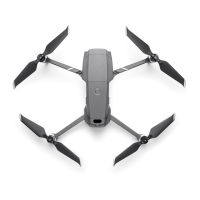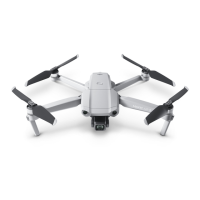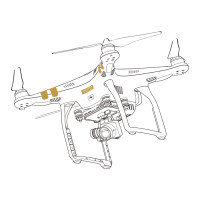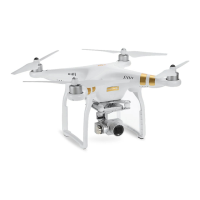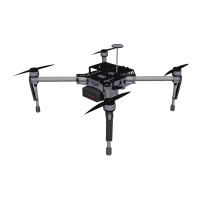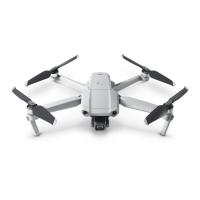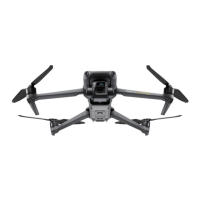DJI Mavic 3 User Manual
17
©
2021 DJI All Rights Reserved.
During Advanced RTH, the aircraft will ignore the preset RTH altitude in DJI Fly and instead will
automatically adjust the flight speed and altitude according the environment (wind speed and
direction, obstacles, transmission signals).
Advanced RTH will not be available if the lighting condition and environment were not suitable for
vision systems during takeo or RTH.
During Advanced RTH, the aircraft will enter Straight Line RTH if the lighting condition and
environment was not suitable for vision systems and the aircraft cannot avoid obstacles. An
appropriate RTH altitude must be set before entering RTH.
When the remote controller signal is normal during Advanced RTH, the pitch stick can be used to
control the ight speed but the orientation and altitude cannot be controlled and the aircraft cannot
be own left or right. Acceleration uses more power. The aircraft cannot avoid obstacles if the ight
speed exceeds the eective sensing speed. The aircraft will brake and hover in place and exit from
RTH if the pitch stick is pulled all the way down. The aircraft can be controlled after the pitch stick is
released.
Straight Line RTH
The aircraft will enter Straight Line RTH when the lighting is not sucient and the environment is not
suitable for the vision systems.
Straight Line RTH Procedure:
1. The Home Point is recorded.
2. Straight Line RTH is triggered.
3. The aircraft brakes and hover in place.
a. If the aircraft is farther than 50 m from the Home Point when RTH begins, the aircraft adjusts its
orientation and ascends to the preset RTH altitude and ies to the Home Point. If the current
altitude is higher than the RTH altitude, the aircraft ies to the Home Point at the current altitude.
b. If the aircraft is at a distance of 5 to 50 m from the Home Point when RTH begins, the aircraft
adjusts its orientation and ies to the Home Point at the current altitude. If the current altitude is
lower than 2 m when RTH begins, the aircraft will ascend to 2 m and les to the Home Point.
c. The aircraft lands immediately if it is less than 5 m from the Home Point when RTH begins.
4. The aircraft lands and the motors stop after reaching the Home Point.
When ascending in Straight Line RTH, the aircraft will stop ascending and exit from RTH if the throttle
stick is pulled all the way down. The aircraft can be controlled after the throttle stick is released. When
ying forward in Straight Line RTH, the aircraft will brake and hover in place and exit from RTH if the
pitch stick is pulled all the way down. The aircraft can be controlled after the pitch stick is released.
If the aircraft reaches the max altitude while it is ascending during RTH, the aircraft stops and returns
to the Home Point at the current altitude.
The aircraft will hover in place if it reaches the max altitude while it is ascending after detecting
obstacles in front.
During Straight Line RTH, the speed and altitude of the aircraft can be controlled using the remote
controller if the remote controller signal is normal. The orientation of the aircraft and the direction of
ight, however, cannot be controlled. The aircraft cannot avoid obstacles if the pitch stick is used to
accelerate and the ight speed exceeds the eective sensing speed.
Low Battery RTH
Low Battery RTH is triggered when the Intelligent Flight Battery is depleted to the point that the safe
return of the aircraft may be aected. Return home or land the aircraft immediately when prompted.
In order to avoid unnecessary danger due to insucient power, the aircraft automatically calculates if the
battery power is sucient to return to the Home Point according to the current position, environment,
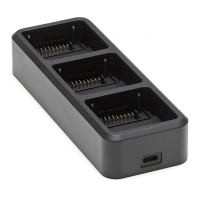
